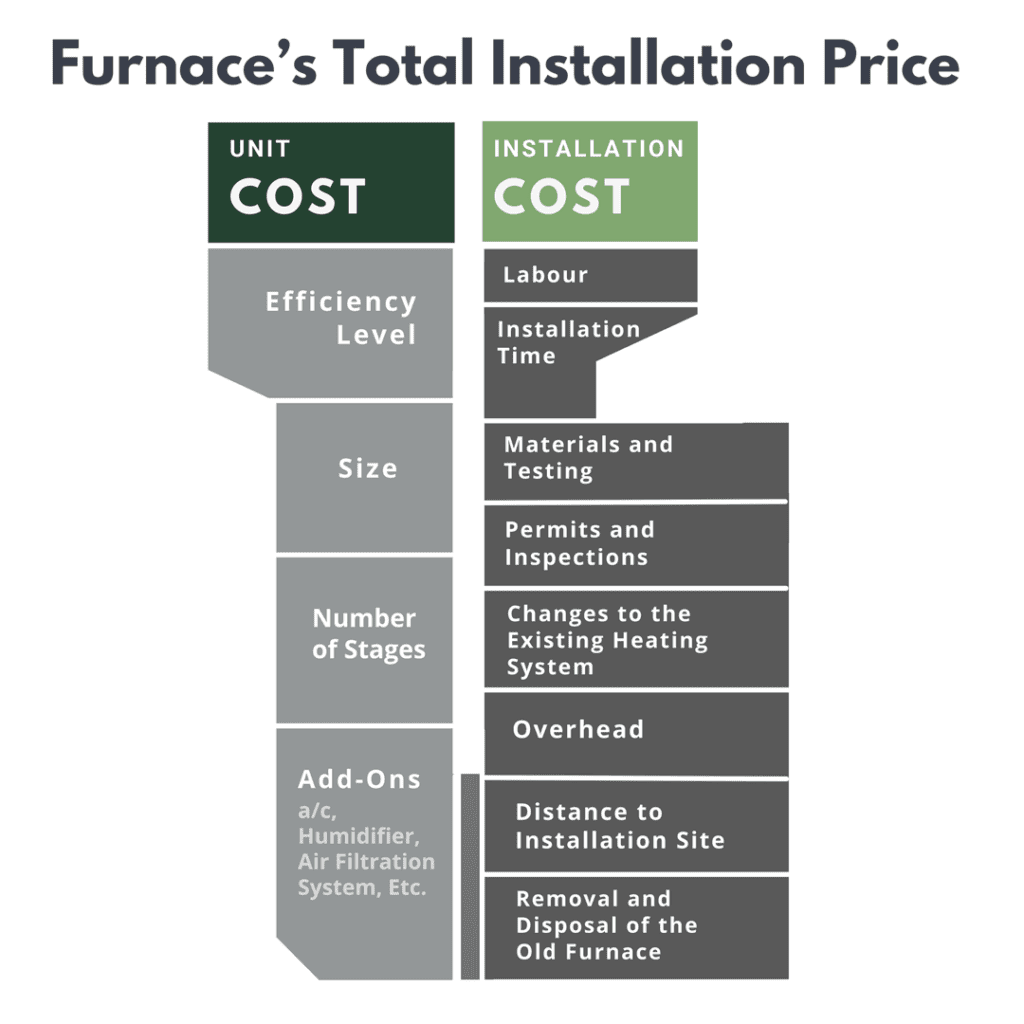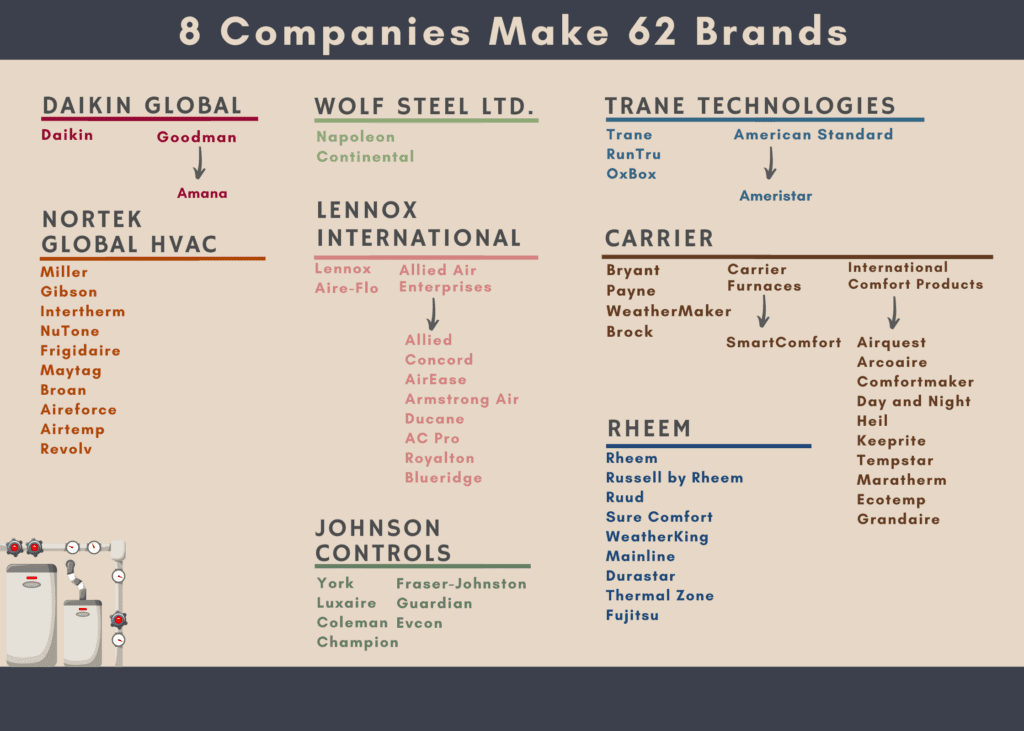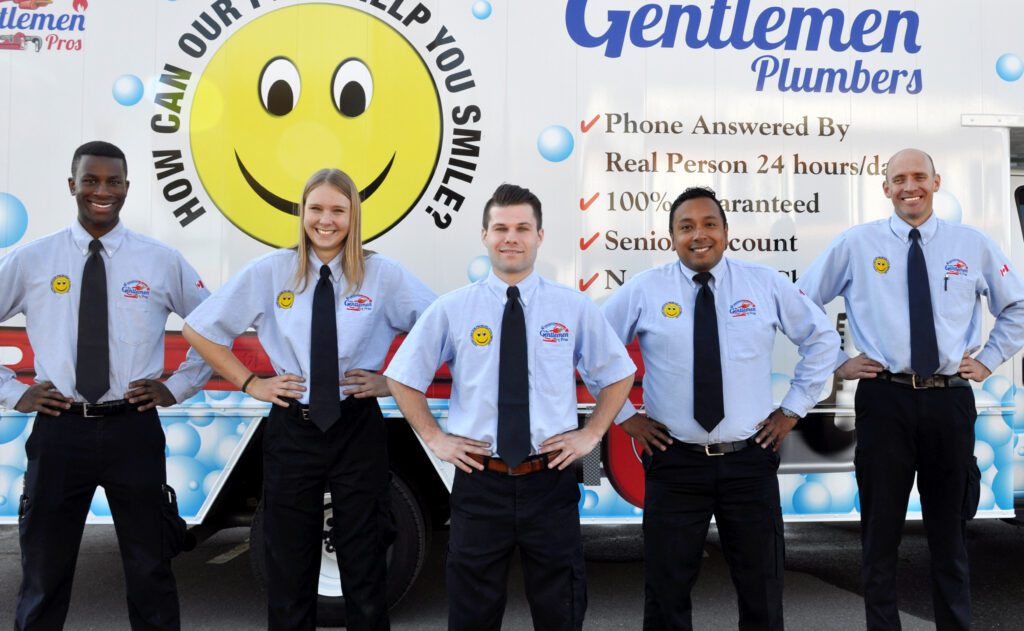
Same Day Service Since
2001
Call The Gentleman Pros Now!
(587) 786-6328
You need a new furnace and you have started researching prices to get an idea of how much money you will need to spend.
You quickly discover it is really difficult to find a price for just the furnace without the installation included. And there’s a big price range for the final price.
Furnace brands and HVAC companies rarely post the price of an individual furnace model. There are a few reasons for this. I’m not going to bore you with industry pricing models which is one reason. But the main reason is that you don’t buy a furnace, you buy a furnace and its installation. They’re a packaged deal, the company you buy your furnace from will also install it.
Another thing you will discover is there is a big range in the average price for a new furnace and installation.
That’s because there are a lot of factors that go into the pricing and the cost of these factors can vary widely from one install to another. My heating experts at The Gentlemen Pros can say after installing hundreds of furnaces, there really is no such thing as an average furnace installation.
This is why I provide a range for the average price of a new furnace and quality installation.
A new furnace and installation from a reputable heating company is an investment between $8,000 and $13,000 depending on your situation.
Notice that I say quality installation. You may be able to find cheaper pricing, but buyer beware. What corners are they cutting to give you that price?
The different factors that go into the total price can be grouped into two categories:

The heating company you select will determine the size furnace you need and will provide you with information and advise you on the rest.
But you have some decisions to make.
Residential furnaces come in a variety of sizes and efficiency levels and you need to know both the size and efficiency rating to get the right one for your home.
Furnace Size
Furnace size does not refer to the physical dimensions of a furnace. It refers to the amount of energy (heat) a furnace can generate in one hour and is measured in BTUs/h (British Thermal Units an hour).
You will notice that many brands simply state the size in BTUs and the h for hour is implied. You may also see furnace size referred to as tonnage, but still written in BTUs. The term tonnage is used mainly in the U.S. and is leftover from a time before BTU/hr became the industry standard to measure a furnace.
On a furnace model’s specification sheet, you will see both input BTU/h and output BTU/h. The input BTUs is the furnace’s size but it does not indicate the amount of heat the furnace can use to heat your home. That is measured by the furnace’s output BTUs and is the number you need to know.
So what is the difference between input and output BTU/h?
When a furnace generates energy (input BTU/h) not all of it goes to heating your home. Some of it is lost through the exhaust created by the burning of natural gas. The remaining energy (output BTU/h) is used to heat your home. And this is the number you need to determine if the furnace is the correct size for your situation.
Furnace’s AFUE Rating
Determining a furnace’s output BTU/h is easy. It’s usually on the furnace’s specification sheet but if it isn’t, it just involves a little math using the furnace’s input BTU/h and its AFUE.
The AFUE is the furnace’s efficiency level and tells you what percentage of the furnace’s input BTUs actually goes towards heating your home.
In Canada, the minimum AFUE a furnace can have is 95 percent. Meaning 95 percent of the energy produced goes to heating your home and the remaining five percent goes up in smoke or in this case, exhaust.
Two furnaces with the same input BTU/h, but with different AFUEs will not provide the same amount of heat for your house. You might have to go down or up a size depending on the AFUE.
For example,
As you can see two furnaces with the same input BTU/h but with different AFUEs will actually heat your home differently. If you don’t do this calculation, you could end up with a furnace either too big or too small for your space.
This is the danger in just replacing your old furnace with the same sized new furnace.
Furnaces today are significantly more efficient than the furnaces installed 10 or 20 years ago. So if your old furnace’s AFUE is only 80 percent and you replace it with the same sized furnace but its AFUE is 95 percent, you will have a furnace that is way too big for your home.
How do size (input BTU/h) and efficiency (AFUE) impact the unit price? Well essentially, the more efficient and bigger the furnace, the more expensive it is.
Stages refer to the number of operating levels your furnace has. A one-stage furnace only has one level. It is either off or running at full power. A two-stage furnace has two levels, off, running at partial power, or running at full power, and modulating furnaces continually adjust operating levels to fit your heating needs.
A two-stage furnace is more expensive than a one-stage furnace and a modulating furnace is more expensive than a two-stage furnace.
Please note the efficiency gains you get with a two-stage or modulating furnace are not reflected in the AFUE rating.
Generally the more stages a furnace has the more expensive the furnace.
If you decide to add a humidifier, air purifier, or mechanical ventilation (or any other additions) to your furnace, they will increase the price. Though it is still probably cheaper to do it all at once rather than installing the add-on at a later date.
The brand of your furnace doesn’t have as much weight as you would think.
At one time the brand name would have been important, but not today. Today all brands make a decent product. There are several reasons for this:
Yes, you read that correctly, just eight companies manufacture 65 of the furnace brands approved for use in Canada — that is brands, not different models of the same brand.
For more information on furnace manufacturers, please check out [Who Made My Furnace?]

The remaining portion of your new furnace price is the installation cost and this is where you will see the biggest difference in pricing among the quotes.
A furnace’s installation price is influenced by the following factors:
The installation cost will include the wages of a licensed installer and most likely a helper. A single person could install a furnace by themselves but it is quicker and safer for two people to do it.
Different jurisdictions have different requirements to be able to install a furnace and it isn’t always easy to figure out what the requirements are and who meets them. For example, in Alberta, a journeyman gasfitter with either their class A or class B certificate is qualified to install furnaces in new construction and replace furnaces in existing construction.
Easy, right? But hold your horses. In Alberta, both the sheet metal worker (as of 2017) and plumber programs are dual certificate programs and include the gasfitter – class B certification. Meaning a journeyman sheet metal worker (who completed the dual certificate program) and a journeyman plumber are also certified as a gasfitter – class B and can install furnaces in new construction and replace a furnace in existing construction.
A certified sheet metal worker who did not complete the dual certificate program can replace your furnace in existing construction but cannot install a furnace in new construction.
In Alberta, you can verify your installer’s credentials here.
Please check your area’s requirements.
The time it takes to install your furnace will impact the pricing. On average, it will take between five and 10 hours to install a furnace.
This is because every install is different. And the more specialized and complicated your install is, the longer it will take, and the more expensive it will be.
These factors will all impact the time it takes to install your furnace:
This includes all the tools, hardware, sealants, venting pipe, tin sheets, fasteners, and anything else the installer needs to install your furnace.
If you live in an older home, the contractor may have to test for asbestos or lead paint.
Most municipalities require you to have a permit to install a furnace and some will only issue a permit to a qualified tradesperson. You may also need a separate permit if modifications are needed to your ductwork and venting.
For example, in 2021, in Calgary, the Contractor’s Furnace Replacement (Gas) permit fee consists of a processing fee of $112, a permit base fee of $10.81 per $1,000 of construction value, and a Safety Codes Council surcharge. The City has an online calculator that gives you an estimate of the permit fee.
In 2021, in Edmonton, the fee for a similar permit is $112 plus a Safety Codes Council surcharge of $4.50.
If your technician needs to pull permits and arrange inspections, this will be included in your installation price and the prices will vary between regions.
Odds are when you are installing your new furnace changes will need to be made to your current setup
If you are replacing a high-efficiency furnace with a newer high-efficiency furnace, the changes could be minimal, possibly some modifications to fit the new furnace and some work to bring everything up to the current codes.
However, if your old furnace wasn’t properly installed, there could be more work to be done by your current heating contractor.
For example, The Gentlemen Pros have removed many furnaces and have ended up staring at the earth where the floor should be. If this happens, a concrete pad will need to be poured for your furnace to sit on. This happens more often than you think because, during a house’s construction, the furnace is often installed before the basement floor is poured.
Also, if any of your ductwork needs repair or sealing or if your electrical needs upgrading, it will add to the cost of your installation.
If your old furnace is a mid-efficiency furnace, you will need to make changes to your current system to accommodate the new high-efficiency furnaces Canada requires. And this can be expensive.
High-efficiency furnaces require different venting than mid-efficiency furnaces. The exhaust they produce isn’t hot enough to rise up and out through a standard flue (chimney) exiting through the roof. So a new flue must be added that exits through the side of your house and is made of 636 plastic pipe. It is called 636 pipe because it is certified to the ULC S636 standard.
They also require a drain to handle the liquid that is produced by the high-efficiency furnaces.
Another change you may need to make is adding a combustion air intake if your home doesn’t have one. If you have an older home, you may also need to add a fresh air intake.
Another result of upgrading to a high-efficiency furnace is an orphaned water heater.
Mid-efficiency furnaces often share the flue with the hot water tank. This flue removes the exhaust from both the furnace and the hot water tank.
Because high-efficiency furnaces are so good at extracting the heat from the combustion process, the remaining exhaust isn’t hot enough to rise naturally up a standard flue. Therefore, high-efficiency furnaces should run their flue (be vented) through the nearest wall.
The previously shared flue which was designed to be used by both the furnace and the water heater may be too big to properly rid your system of just your water heater’s toxic exhaust.
To fix this, the original flue often requires an insert or chimney liner — an added expense — to make it smaller so it can effectively vent your water heater’s exhaust fumes.
A percentage of the company’s operating costs (e.g., vehicles, gas, rent, office costs, insurance, training) will be included in the pricing.
The further away you are from the installation company’s location, the more expensive your install could be. This is one reason why installations in rural areas tend to be more expensive than installations in urban areas.
The installer will remove your old furnace and most will dispose of it for you. The technician may need to break it down for proper disposal and there could be third-party disposal fees for the old furnace.
If there is a lot of competition among HVAC installers in your area, you will pay less than an area that only has a few installers.
The above items are the most common factors that impact the cost of a furnace installation. However, they are just for guidance and there may be other costs that arise from the specific needs of your furnace installation.
Before you choose your furnace, you need to select your heating contractor. Keep reading for some great tips on choosing a reputable and skilled contractor.
